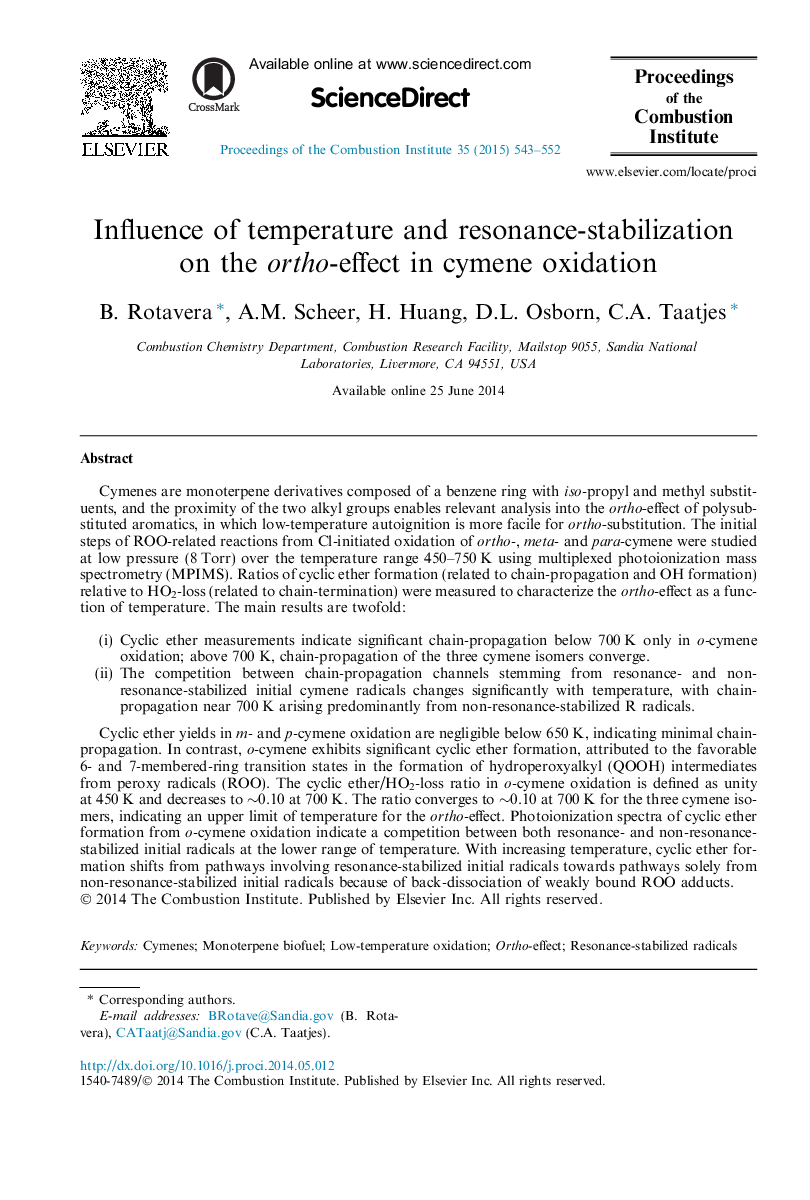| Article ID | Journal | Published Year | Pages | File Type |
|---|---|---|---|---|
| 6679313 | Proceedings of the Combustion Institute | 2015 | 10 Pages |
Abstract
Cyclic ether yields in m- and p-cymene oxidation are negligible below 650Â K, indicating minimal chain-propagation. In contrast, o-cymene exhibits significant cyclic ether formation, attributed to the favorable 6- and 7-membered-ring transition states in the formation of hydroperoxyalkyl (QOOH) intermediates from peroxy radicals (ROO). The cyclic ether/HO2-loss ratio in o-cymene oxidation is defined as unity at 450Â K and decreases to â¼0.10 at 700Â K. The ratio converges to â¼0.10 at 700Â K for the three cymene isomers, indicating an upper limit of temperature for the ortho-effect. Photoionization spectra of cyclic ether formation from o-cymene oxidation indicate a competition between both resonance- and non-resonance-stabilized initial radicals at the lower range of temperature. With increasing temperature, cyclic ether formation shifts from pathways involving resonance-stabilized initial radicals towards pathways solely from non-resonance-stabilized initial radicals because of back-dissociation of weakly bound ROO adducts.
Related Topics
Physical Sciences and Engineering
Chemical Engineering
Chemical Engineering (General)
Authors
B. Rotavera, A.M. Scheer, H. Huang, D.L. Osborn, C.A. Taatjes,
